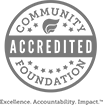Supporting Access for People with Autism
Sources disagree on the current prevalence of autism and disagree even more on what causes it. But one thing everyone involved with autism will tell you: more people than ever need support to manage the disorder — and that support is not easy to access.
“We’re seeing a tsunami of autism now,” said Dustin Watkins, Executive Director of Bittersweet Farms. “Some of this increase is due to a lack of awareness and understanding of the condition in the past — but it is also definitely increasing. Autism is a spectrum and families with people on the spectrum face all kinds of challenges, no matter where they are on that spectrum.”
But, thanks to the work of visionary leaders in the northwest Ohio autism community, the region affords youth and adults across this spectrum more support and connection than many U.S. cities its size, and those resources are growing. In this annual report, we showcase three innovating organizations that have received Greater Toledo Community Foundation support via family foundations, fundholder gifts and grants.
Bittersweet Farms
As understanding of autism grew throughout the 1970s, many area schools provided classroom education and other services for children whose autism required significant support. But when these children aged out of public education in their late teens, most faced a limited future with aging parents absent peer-group friends or meaningful work.
One special education teacher in Toledo Public Schools, Bettye Ruth Kay, dreamed of a better future for her students. In 1983, that dream became Bittersweet Farms.
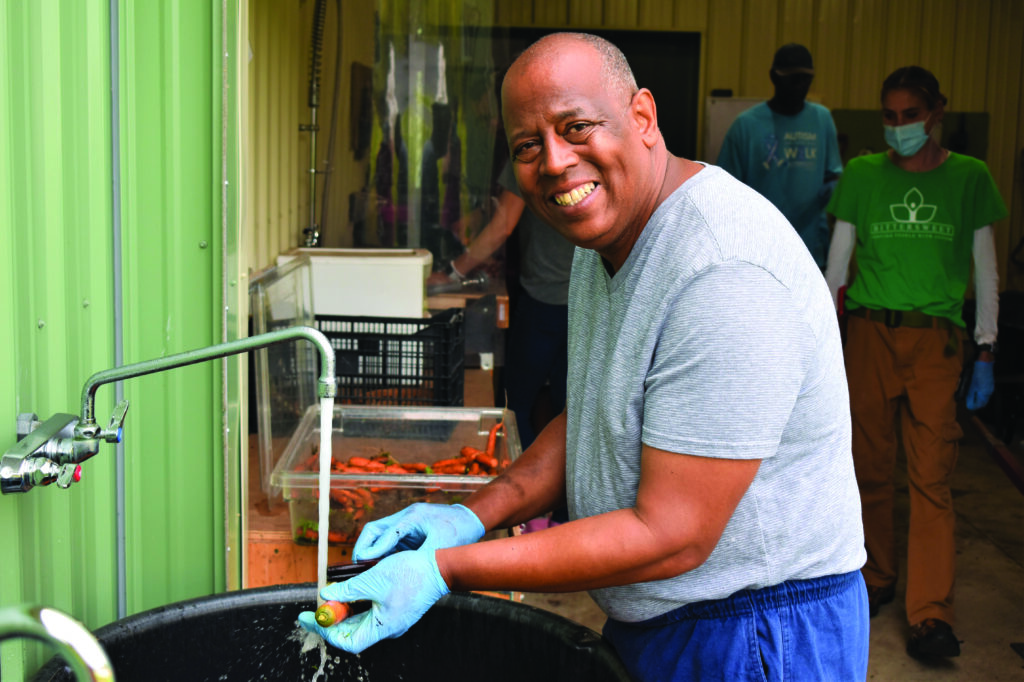
Modeling her vision on England’s Somerset Court, the world’s first farmstead community for adults with autism, Bettye began Bittersweet Farms with the help of area businesses and community members. Today, nearly 150 individuals are participating in day programs or living onsite at three different Bittersweet locations in Whitehouse, Lima and Pemberville — which still include some of Bettye’s students from the late 1970s.
Bittersweet’s focus on horticulture, animal care and creative arts reaps tangible benefits for program participants. “We could do more, but our workforce is the main limitation,” said Dustin, who joined Bittersweet’s support staff right out of college. “High behavioral needs require the highest grade of professional support because it is so much about rapport and relationships. It’s a real labor of passion — nobody gets into this kind of work because of the money. But we still have to be competitive to attract skilled professionals and offer quality programs that prospective employees recognize as making a difference.”
Bittersweet’s focus on horticulture, animal care and creative arts reaps tangible benefits for program participants. “We could do more, but our workforce is the main limitation,” said Dustin, who joined Bittersweet’s support staff right out of college. “High behavioral needs require the highest grade of professional support because it is so much about rapport and relationships. It’s a real labor of passion — nobody gets into this kind of work because of the money. But we still have to be competitive to attract skilled professionals and offer quality programs that prospective employees recognize as making a difference.”
Charitable donations are what make those programs possible. “The lion’s share of our funding comes from Medicaid — about 80-85%,” said Dustin. “Gifts from supporters make the crucial difference in the quality of our programs. Many of our core initiatives have been funded by Greater Toledo Community Foundation grants and gifts from donor advised funds.”
Avenues for Autism
When Bob and Suzy Tyner’s first child began exhibiting developmental abnormalities in the early 1950s, autism wasn’t even a word yet, let alone a diagnosis. But the Tyners were an exceptional couple. They relentlessly pursued the limited resources available at that time to help their son live his best life — and they had a vision for other families like them.
“In the 1950s and 60s, they were carving new trails,” said Dave Tyner, Bob and Suzy’s youngest son. “Dad’s original idea was ‘I want a building where people could go to get what they need.’ Mom and Dad knew that if they just had some information, they could have made a huge difference with their own son, and having blazed those trails, they felt they could make a difference for others.”
At first, the brick-and-mortar building of Bob’s dreams was out of reach — but eventually, the family started the Tyner Foundation in the late 1990s and began fundraising in earnest. In 2004, the Tyners established their foundation as a supporting organization with GTCF and the Great Lakes Center for Autism, which became Avenues for Autism in 2004, now housed in ProMedica’s Finnegan Center. Today, the Tyner Foundation is the primary source of non-Medicaid funds for the organization, and the Tyner family remains highly involved in both the fund’s and Avenues’ governing boards.
Mary Jane Luck, the Tyner’s daughter noted, “In a lot of ways, these parents have to reinvent the wheel. Where do you get information? Where do you get a diagnosis — and how do you get in line for one, which itself can take some time? And once you do, it’s not a one-size-fits all as far as therapies go. Avenues for Autism streamlines this process for families.”
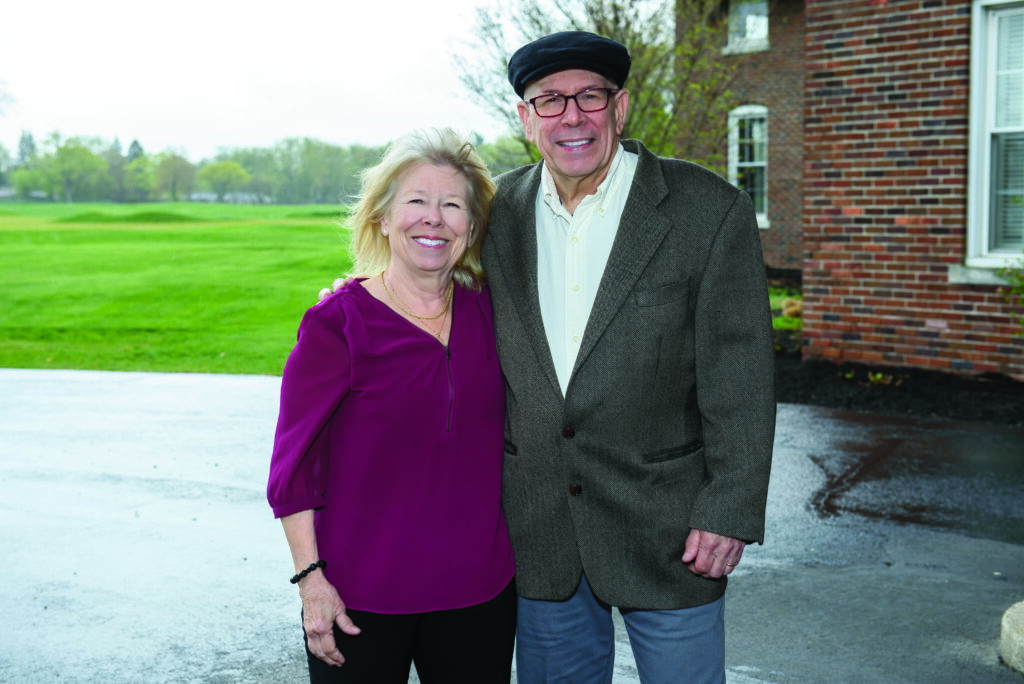
Avenues’ executive director, Stacy Harper agrees. “No two situations are the same for families with autism, and everyone’s journey is different,” she said. “Avenues is a place where families can get help, in person or online, with navigating our many area resources to find those that best fit their needs. We also provide highly trained therapists who work with caregivers as well as those on the spectrum.”
Many such families have needs that aren’t paid for by Medicaid — so the Suzanne Tyner Autism Fund was created specifically to meet these needs. Stacy gave an example: “An area family had a child who could not tolerate the tactile stimulation of a shower. They didn’t have a bathtub and couldn’t afford to pay for one. A grant from this fund covered the cost of a tub and its installation, so the child could bathe comfortably.” In 2022, this fund provided roughly $45,000 to more than 30 families for medical and social services, therapies, sensory items, tuition, safety equipment and more.
Bob and Suzy have now passed, and their legacy is being maintained by Dave and Mary Jane, with Dave’s two sons now involved as well. “GTCF has been a huge factor in the growth of Avenues for Autism” said Dave, noting that because he and Mary Jane both live out of town, GTCF’s local business connections and guidance have been as important to them as GTCF’s management of the Tyner Foundation’s funds. He concluded: “In our early days, when it was mainly fundraising, our resources were a total pass-through. Now, as a supporting organization, our foundation can provide a certain amount in perpetuity to Avenues — and more than 90% of the money goes directly to families to pay for services or other needs.”
Valentine Theatre
Thanks to the efforts of Destination Toledo, The Ability Center and several area tourism attractions, Toledo is on its way to becoming a Certified Autism Destination city for families nationwide.
The Valentine Theatre is now among these attractions — but this wasn’t the initial goal of the Valentine staff when they began exploring autism-friendly programming for children.
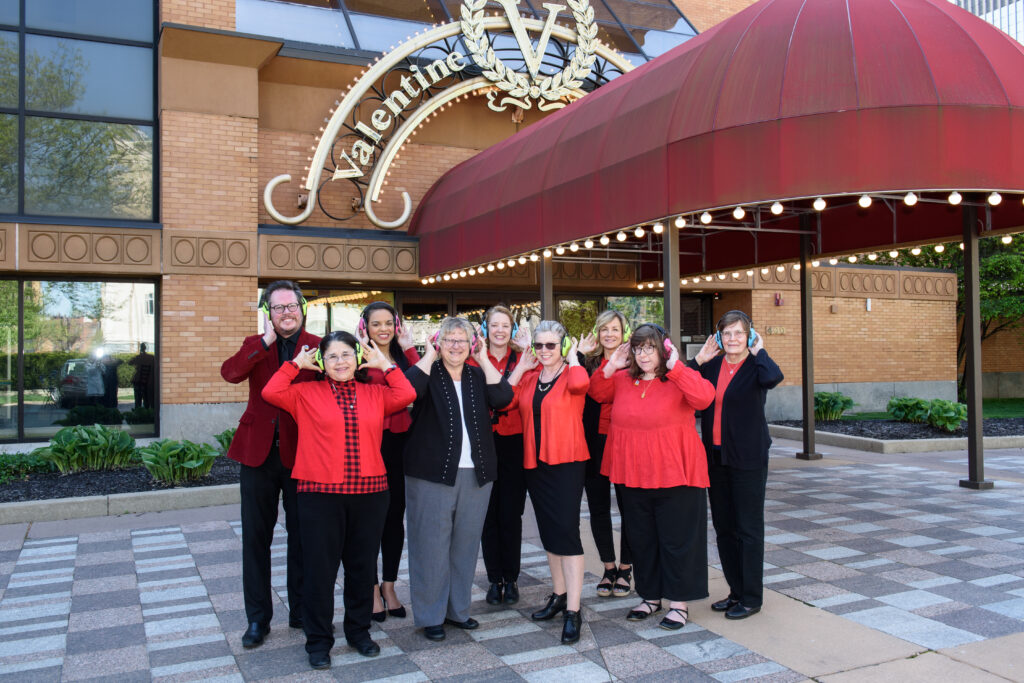
“Our Executive Director, Jori Jex, had nominated me to be a panelist on the Ohio Arts Council sustainability grant,” said Valentine Development and VSD Coordinator Kelby Sodeman, describing her experience in Columbus. “One of the presentations that stood out to me was a New Albany Symphony program for children with autism called ‘Sensory Saturdays.’ It made me realize there were whole populations that were missing out on what we had to offer.”
Valentine’s leadership was enthusiastic about Kelby’s report and the possibilities of creating special programming for children with autism. On the advice of former Executive Director of Avenues for Autism Katina Harding, the Valentine created a “retreat space” adjacent to the front lobby where audience members who needed a stimulation break could go during a performance.
Another essential key to an autism-friendly experience was high-quality training for [#] of their all-volunteer team of ushers. Suitable programming designed for youngsters with autism was another need. Jori explained how GTCF made both possible: “GTCF had a community builder grant in two amounts — $50,000 and $25,000. Our application for the smaller grant was approved and allowed us to pay for staff and volunteer training. It also covered resources for visitors like headsets and fidget toys and the programming itself, so we could avoid taking on a heavy financial risk as we implemented the program.”
Kelby added: “The national touring groups who present our children’s theatre were already offering sensory-friendly adaptations of their programs. So, even though there were modifications to the experience, all of our usual families came anyway — they didn’t feel like it wasn’t for them.”
GTCF-funded staff and volunteer training also earned the Valentine a Certified Autism CenterTM (CAC) designation. The certification is granted by the International Board of Credentialing and Continuing Education Standards (IBCCES), and supports the effort to make Toledo the second autism-friendly destination city in the U.S.
But it’s the joy of children who’ve been introduced to the experience of live theatre of which the Valentine team is most proud.
“We had tons and tons of compliments!” said Kelby. “For our very first show, I stood where our usual will-call table was to distribute headsets and fidget toys, just letting people know what we were doing. People would say, ‘I have a friend whose child has autism — I’m going to let them know about this!’ Most families like this have never been able to take their child to live theatre for fear their child might be too disruptive or that they might be ‘shushed’ or made to feel uncomfortable. Our mission was to make the Valentine a warm and accommodating place for children with autism and their families to make memories together.”
Elizabeth Kubler-Ross observed that beautiful people “do not just happen” — their compassion and concern for others is often rooted in or informed by difficult personal experiences, which sometimes accompany their many blessings. This was certainly true for Craig and Cathy Sheets.
A tax accountant and partner at the Plante Moran accounting firm, Cathy was always a high achiever. “I was a straight-A student and couldn’t understand how some students struggled to grasp things,” she said. But her first child, Sara, taught her about those struggles: she was born on the autism spectrum with a low IQ. And then, not long after their second child, Rebecca, had begun elementary school, Cathy was diagnosed with multiple sclerosis.
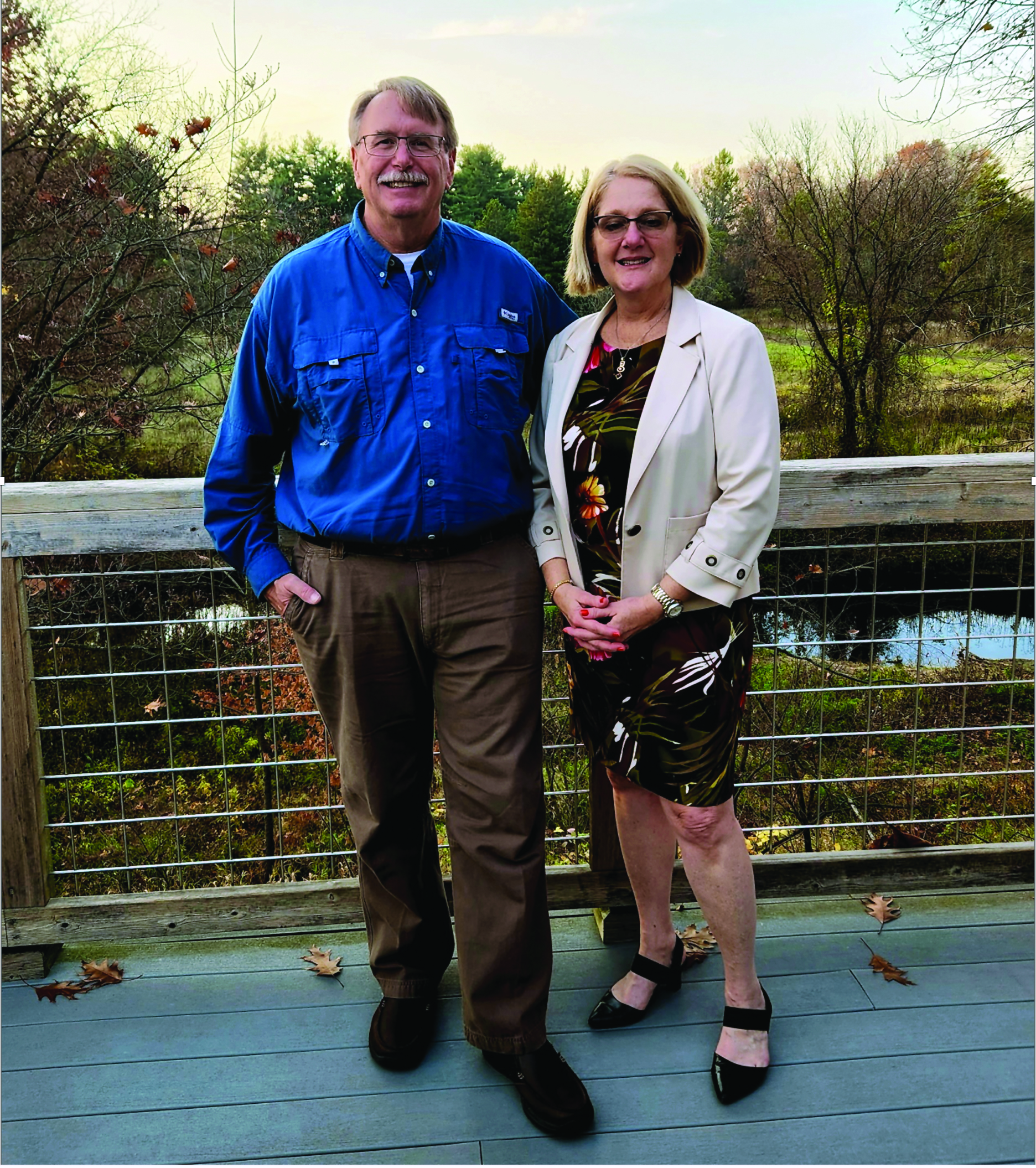
“I had two years where I was asking myself, ‘Why is this happening to me?’” Cathy said. But she also came to deeply appreciate her many blessings through the experience. Following her diagnosis, as she reassessed her demanding personal and professional roles, both her husband Craig and her partners at Plante Moran were supportive. She recalled: “One of my co-workers said to me, ‘You know how you love helping people? Now it’s your turn to let other people feel that love.’”
Cathy’s experience inspired the couple to seek new ways to help others in need. “We were able to manage everything — all the medical bills for me, and for Sarah, too,” she said. “We know there are so many people who need an extra hand. We asked ourselves, ‘How can we do something to help people in the community when they find themselves in that spot?’”
The couple decided to answer that question with a donor advised fund at Greater Toledo Community Foundation. Sometime later, they worked with their GTCF advisor to convert their donor advised fund to a donor advised endowed fund in which gifts are made only from interest on the fund, which enhances its longevity.
“With the endowed fund, we contribute to the fund to build capital when our tax obligations are at their highest,” Cathy explained. “It enables us to support in perpetuity the kinds of causes that are important to us. It also enables us to bring our girls into our family philanthropy. GTCF provides the oversight and vetting that will make it easy for them to continue our intentions after we are gone.”
Craig and Cathy are looking forward to the time when their endowment will reap rewards for others. “Right now, our focus is on its funding, so we are not thinking about exactly what to fund — and we see that as another benefit of working with GTCF,” she noted. “When future need arises, the money will be there.”
The couple also values the Foundation’s local focus. “Even though I didn’t grow up in Toledo and we’ve since moved away, Toledo is where we raised our family. So, it was very important to me to have that tie,” said Cathy. “Toledo gave us a lot and it has a special place in our hearts.”
When Bob and Sue Savage met at a Catholic young adult convention at New York City’s Madison Square Garden, excitement was in the air in more ways than one.
“President Kennedy had come to address the meeting, and everyone was thrilled to see him,” said Sue. Bob was certainly pleased to see the president — but he was also there for other sights. “What do young guys like to do? Drink beers and look at the girls!” he chuckled. Sue had caught his eye, and before long, marriage was on the horizon.
Bob’s energetic leadership as a student at The University of Toledo had drawn the attention of local political leaders. By the time Bob and Sue met, although he was barely out of college, he had already been elected to his first term on Toledo city council. He served for three consecutive terms from 1963 to 1969 as Toledo’s youngest councilman and leading vote-getter. But in 1969, he declined to run again. Both his family and business were growing, along with Bob’s role in the community as a business leader — including a term of service on the board of the brand-new Toledo Community Foundation when it was launched in 1973.
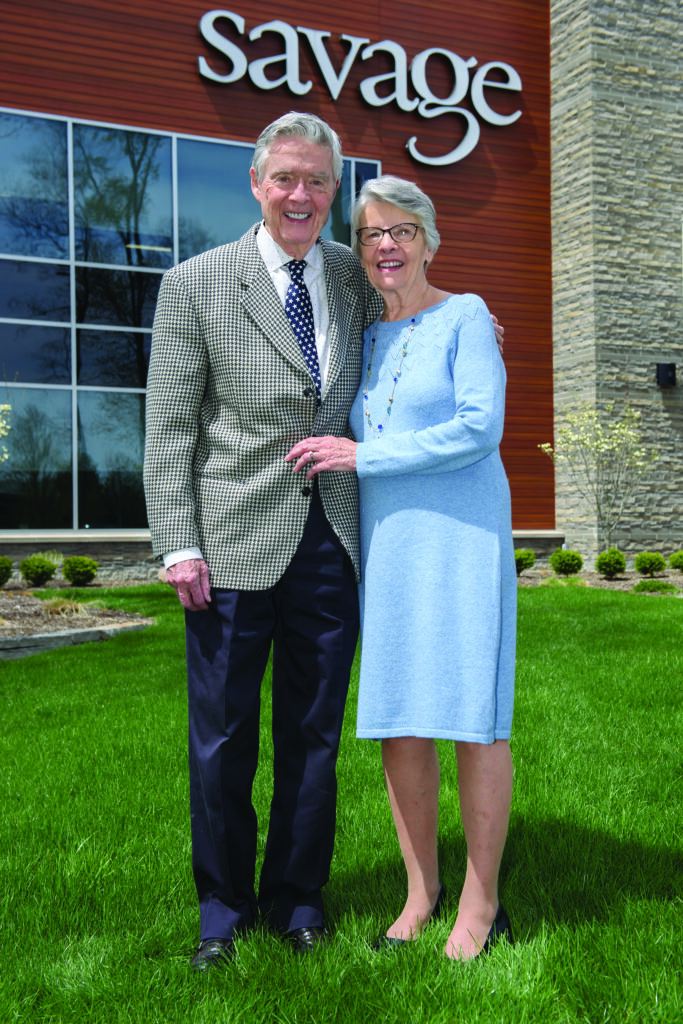
As the Savage’s six young children began their education, Sue continued the Savage family’s public service. Sue took on a variety of volunteer roles in their schools and at other institutions as well, including St. Anthony Villa, and most recently, the Christ Child Society and as chair of the board of the Toledo Lucas County Public Library.
It was natural, then, that Bob and Sue chose a donor directed pooled fund with Greater Toledo Community Foundation to manage their regular contributions to the many schools and charitable organizations they supported over the years. “Almost all our giving is local,” noted Sue. “We chose a donor directed fund so we could specify where all the gifts from our fund would go, whether annual donations or gifts for special projects, such as the creativity lab at the downtown library branch.”
Bob has also created two GTCF funds to facilitate fundraising and support for specific causes. The Science Society Fund helps Toledo’s Imagination Station refresh its permanent exhibits, and the Distinguished Clown Corps Fund helps defray the cost of Toledo’s annual holiday parade. Both are funded by membership fees, and in the case of the Clown Corps fund, the yearly dues reserve the member a spot in the holiday parade’s clown brigade.
Bob added, “The Community Foundation gives people a convenient way to manage charitable giving, and a good place to put their money to do good work in the community. That’s what sold us on being involved at the very beginning, and it hasn’t changed — we think it’s great.”
A “disconnected entrepreneur” might sound like someone running a company that isn’t tapped into what’s happening around them. And in a way, that’s true – but not the way you might suppose.
“Disconnected entrepreneurs” are those who have historically lacked access to the three essentials of successful businesses — capital, services and connections. Black-, Latinx- and women-owned businesses often find themselves without these three essentials and, as a result, may struggle to succeed.
Connecting our region’s enterprising but under-resourced business owners with these critical resources was the goal of Greater Toledo Community Foundation’s multi-year grants to JumpStart.
ESP provides insights for young companies
JumpStart had its beginnings 20 years ago in Cleveland as a venture to support tech startups in northeast Ohio. Backed by both state and community support — including major grants from the Ohio Department of Development (ODOD) and KeyBank — JumpStart leads the ODOD’s Entrepreneurial Services Provider (ESP) program across Northern Ohio.
Its success with the ESP in Northeast Ohio made it the ideal organization to step into the gap in 2018, when a new leader was sought for northwest Ohio’s ESP, NextTech. Partnering with ProMedica and other organizations, JumpStart opened an office in Toledo and began leading the ESP in Northern Ohio.
Over time, JumpStart also became highly experienced in serving disconnected entrepreneurs.
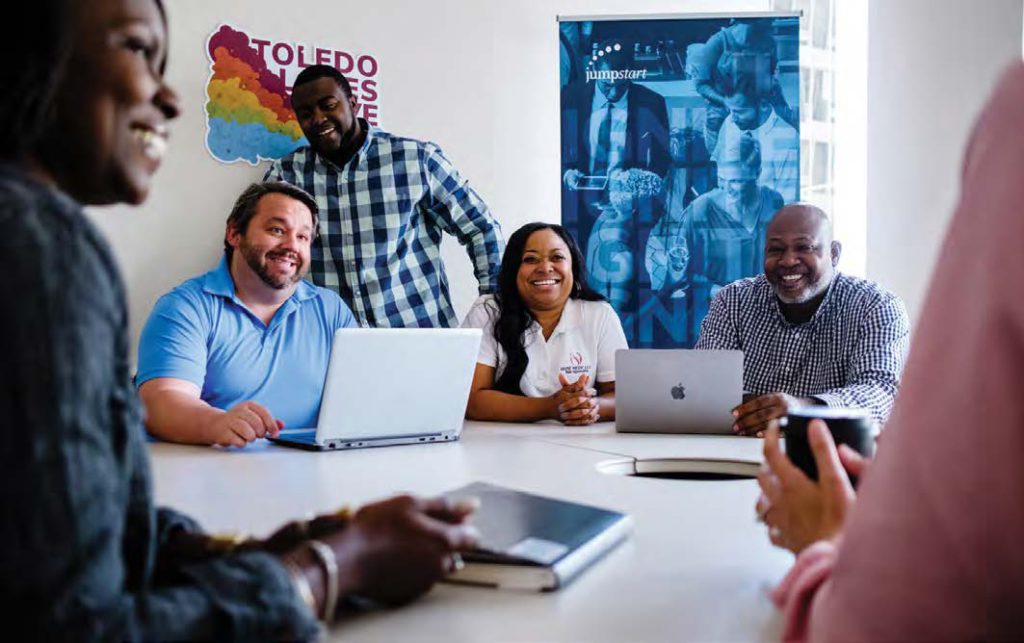
“We are not exclusively a minority business accelerator,” explained Amy Haschak, JumpStart’s director of Toledo operations, “but a lot of our work bridges that gap.” She added, “Our mission is to unlock the potential of entrepreneurship to transform entire communities. We find that some communities have more challenges than others — so making sure that everyone has access to resources is a JumpStart priority.”
GTCF and BGC partner for capital, services and connection
An initial Community Funds Impact grant from GTCF provided funds to support JumpStart’s work, including its centerpiece program, the Business Growth Collaborative (BGC). Convened and facilitated by JumpStart, the BGC currently comprises 12 independent nonprofits with a history of well-proven programming for business owners. The collaborative supports entrepreneurs in varying essential ways — including operational and technical support, financing and mentoring.
Addressing a shortage of mentors for disconnected entrepreneurs was a particular focus for the BGC. The GTCF Community Funds Impact grant, which extended over four years and helped to seed the BGC’s mentoring program, was key to attracting skilled participants. The initial outcomes were so successful, GTCF also awarded JumpStart a grant through the Equity and Access Initiative Fund. The additional award provided capital for minority owned businesses and entrepreneurs along with ongoing support for a relationship manager at a BGC member organization who focuses on diversity, equity and inclusion matters for clients.
GTCF’s Vice President of Community Investments, Patrick Johnston, explained: “Connecting area nonprofits for greater efficacy is a major focus of the Foundation. The goal of the BGC was to bring together existing groups with well-proven track records to help them be more efficient. It was an ideal fit.”
Amy described the game-changing role of the BGC: “It’s not uncommon for organizations to work alongside each other and make referrals, but then they don’t know what happens after that. The Business Growth Collaborative comes together in a more sophisticated way, with monthly meetings to discuss clients that need assistance and referrals.” The BGC also structures their client support by establishing milestones and tracking their clients’ progress toward those goals.
Education plays a vital role
Structured training is also key to JumpStart’s success model. “We do Value Proposition and Market Validation workshops for very early-stage businesses,” said Amy. “These provide a firm foundation for new entrepreneurs while also identifying business ideas that are not well thought-out or involve entry into an already saturated market.” Other programs available through JumpStart include one-on-one advising and a multi-week “Blueprint” program for start-up planning.
JumpStart clients with established businesses that meet a revenue threshold and other criteria can participate in their Impact program, a 12-week intensive limited to five businesses per cohort. Impact participants meet weekly with two advisors, a JumpStart staff member, and a volunteer from the community. At the end of the program, cohort members do a pitch showcase in front of judges from the community. “The top pitch is awarded $10,000 to support their business; the rest get $2,500,” said Amy, “so they are literally paid to enter the program. These and other JumpStart investments in entrepreneurs pay handsome dividends in terms of area business growth, employment and tax revenues,” she added.
State funding leverages donor dollars
JumpStart’s Communication Director, Vicki McDonald, noted that their funding structure provided even greater opportunity for impact. “Our grant from the state of Ohio has to be matched dollar for dollar,” she said. “So, to receive funds, we must raise the equivalent funds, giving us the unique ability to leverage our financial contributions.”
“We also wouldn’t have gotten as far as we have without our volunteers,” she added. “There are many exciting ways to support area entrepreneurs through JumpStart and make a deep economic impact on the community.”
As a teacher, Mary J. Baird would often take inspiration from a poster in her classroom emblazoned with these words. With the legacy scholarship fund she established in 2021, Mary will keep that flame burning brightly for former students of Sylvania’s Timberstone Junior High School.
“I’m excited about the sparkle in kids’ eyes,” she said, reflecting on her teaching experiences. “I taught 7th-grade English for 15 years, and then I was asked to develop a new gifted education program.” At first, Mary split her time between English and gifted ed at McCord Junior High — but when the new Timberstone Junior High was built, she took on gifted ed full time. “Everything began with the idea of creativity,” she said. “It gave the kids an open door — and when they walked through it, they flew from there.”
“Education is not the filling of the pail but the lighting of a fire.”
- William Butler Yeats
Mary also developed closer relationships with her Timberstone students than she was previously able to do. “I had the same kids for three years — 6th through 8th grade — so I knew them and their families.” She also knew of their unspoken hopes for their future. “There are so many kids that have quiet, private dreams of what they want to do in their lives — but if they don’t have the finances to take that leap, they can’t.”
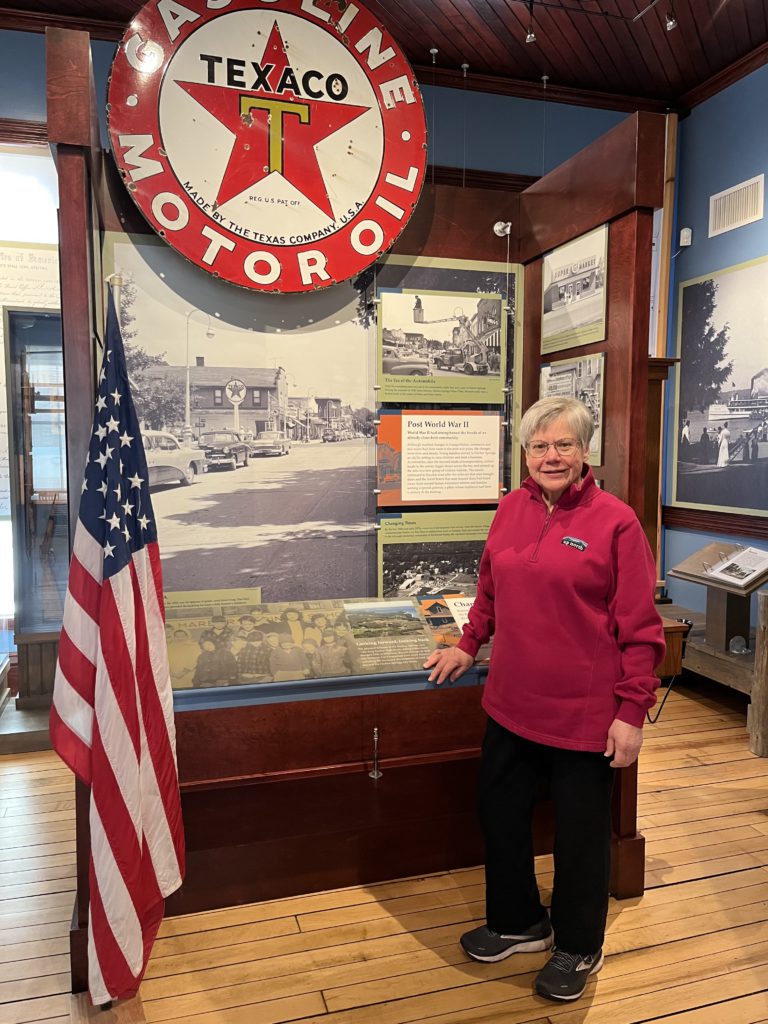
After her retirement, Mary pondered for some time what she could do with her estate that would have meaning. “I was the last remaining member of my family,” she explained, “and in the back of my mind, I had those sparkling eyes. There are a lot of sparkling eyes out there who need to fly — what better purpose than to give them a springboard for college?”
With the help of her attorney, who suggested Mary work with Greater Toledo Community Foundation, she established a legacy scholarship fund, designated for former Timberstone students who will attend a four-year college or university. A committee of Timberstone teachers appointed by the school principal will determine each year’s awardees. “I called Jesse Stock at GTCF and he took the reins. It was easy after that,” she noted.
“My parents were so generous with us as kids and education was #1,” Mary said of her choice to fund the futures of others. “My father created a trust for us. Because so much love was funneled my way, I feel it is my responsibility to continue what they did.”
Many individuals who have established funds with Greater Toledo Community Foundation have come to know Bridget Brell Holt as a Foundation staff member and advocate for managing family philanthropy through GTCF. So, it was only natural when her mother, Joanne Seidel Brell, was about to lose her life to cancer that her father, Tom Brell, decided to establish a designated fund in his wife’s honor.
“When she became my wife, I was very lucky,” recalled Tom, reflecting on his partner of more than 50 years. “She was an amazingly talented woman, and she never sat still. But she also got on well with people and almost never said an unkind word about anyone. And she raised three wonderful daughters, too.”
As the wife of a third-generation resident of Maumee, two causes of particular importance to Joanne were the Maumee Valley Historical Society and St. Joseph’s School. She supported both with gifts and volunteer time — so the family chose a designated fund specifically to help finance these organizations.
“Joanne knew about the fund before she passed, including the benefitting organizations,” said Tom. “She was a big supporter of both the school and the historical society, so her fund continues that support now that she’s passed.”
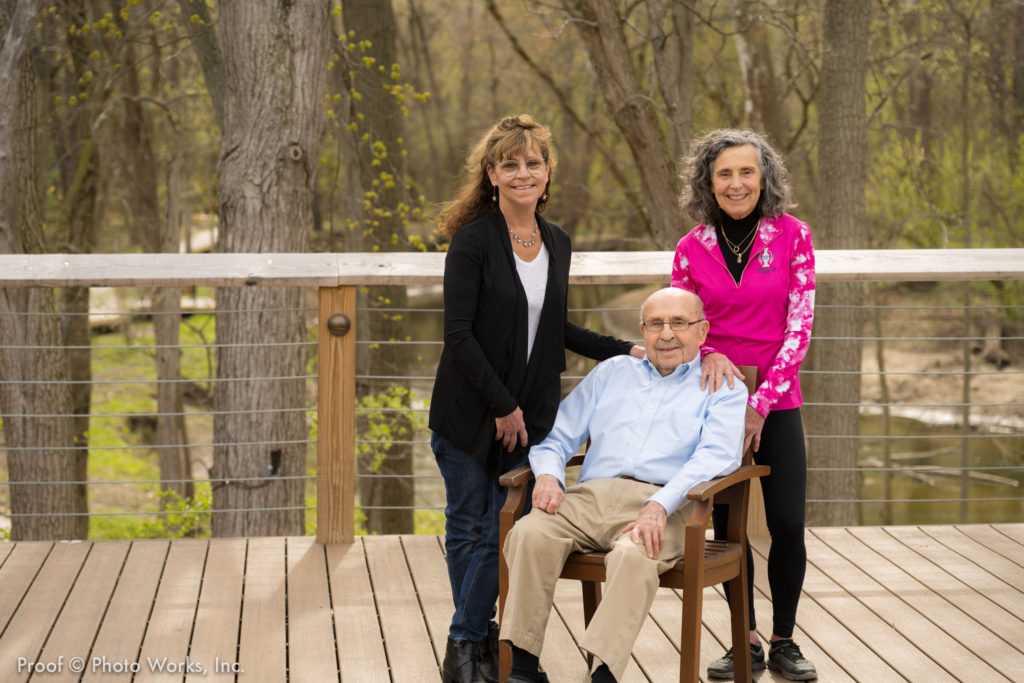
Said Bridget’s sister, Gretchen, “One thing we love about the fund is that we can honor her memory with contributions for family birthdays and holidays.” She noted that when their sister Becky passed in 2014, all the donations in her memory were contributed to the fund.
“Since Mom died in 2005, her fund has grown tremendously,” observed Bridget, “and it will go on in perpetuity. We like that it makes giving very simple, and if either the school or historical society cease to exist, the Foundation will continue to honor her memory by supporting similar organizations.”
“Mom was from a very comfortable family and contributing to society was very important,” said Gretchen. “Giving back to the community was just a way of life — they served as well as gave. With this fund, we all can continue that tradition.”
As one of the Toledo area’s leading family-focused community agencies, the YMCA of Greater Toledo has had a long relationship with Greater Toledo Community Foundation. When the COVID-19 pandemic upended the lives of so many served by the Y, the established partnership became more important than ever.
Rewriting the script for childcare
“GTCF had been helping support our early childhood programs that serve infants, toddlers and preschoolers by enabling us to improve teaching practices and program quality, as well as hiring a teacher mentor to implement curriculum programs,” said Lesley Doria, YMCA Vice President of Child Care. “The whole culture in our early childhood programs had changed in a positive direction.”
She continued, “It’s well-known that more than 60% of children entering kindergarten in Ohio are not ready to learn. Our goal was to have every child kindergarten-ready, and pre-COVID we had been making tremendous progress. We had more than 20 centers serving 1300 to 1500 kids each day from 10 area school districts, with about 86% of kids in our programs at ready-to-learn levels.”
Then on March 25, all early childcare centers were ordered to close — and the Y’s forward momentum suddenly halted. “We received pandemic licensing but maintaining capacity to re-open was a challenge. We had to change health and safety practices as well as cleaning procedures and spent a lot of time and expense to make those work,” said Lesley. “At first, we were able to keep only four centers open and could accept only about 200 youngsters from families of essential workers.”
Pre-pandemic, the Y was also working inside elementary schools, providing wrap-around before- and after-school care — and again, the Y adapted. “We worked directly with school districts in the past, so we were an entity the schools could lean on for support,” said Lesley. “We transitioned our early childcare stand-alone services to accommodate working families with school-aged kids who needed daytime supervision.”
Lesley observed that GTCF funding was vital to sustaining the YMCA’S childcare activities during the peak months of the pandemic. “Some of the funds helped us provide staff to facilitate virtual learning. Kids needed a lot of help with that, especially at the very beginning,” she noted.
“And, about 50% of our kids are on some kind of assistance, such as state funds or YMCA scholarships, and paid by attendance, rather than enrollment. This was tough because student attendance was very inconsistent,” she explained. “The other 50% of families couldn’t budget for kids to be out of school the entire time. Going from $60 or $80 a week for part-time to $140 for full-time is a big jump up. GTCF funding allowed us to expand services to kids without passing costs along to families.”

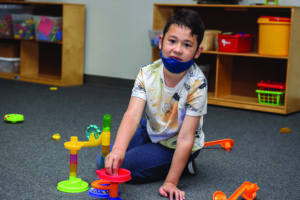
Feeding the newly hungry
When many formerly self-sufficient families found themselves under financial stress, GTCF funding also supported expanded food distribution and hot meals for families at various YMCA facilities across the region.
Beth Deakins, YMCA’s Director of Healthy Living, explained the Y’s role of distribution in a collaborative effort to provide meals to families in need. “We work with Summer Meal Partners, a group that provides kids with food when school is not in session, Connecting Kids to Meals, and A Village on Adams / Manhattan’s Catering, both of which provide the bulk of meals for children in after-school programs, sports programs that feed participating kids, and YMCA sites,” she said.
With pandemic restrictions in place, the Y and their partners no longer could provide the in-person, family-meal experiences that were their norm. But hot meals that families could enjoy together was still the focus. And, with the GTCF grant, the program expanded from one to three meals a day — so when parents came to pick up lunches, they would also get something for dinner and breakfast for the following day.
“We saw the same faces and families over and over,” said Beth. “They told us that sharing breakfast, lunch and dinner together when the parents were unable to work made a big difference. Because of the GTCF funding we received, we built new relationships with families that typically wouldn’t have needed assistance.
“In some cases, families weren’t even really able to cook,” Beth added. “One of the barriers we consistently saw were families that didn’t even have the means to cook — like a working stove or oven, or pots and pans — or families who had the utilities turned off because they were unable to pay the bills. The hot meals that the Y was able to provide helped parents fill the gap even though they didn’t personally have the means to make that happen.”

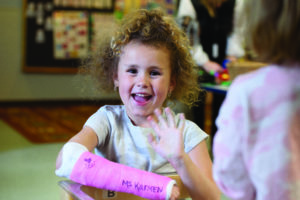
GTCF grant supports sustained service
“When it was announced that schools were going to go remote and food access at schools would no longer be available to them, the Y network pulled together to ask, ‘What are the locations where we could start something immediately?’” said Beth. Right away, Wayman Palmer and Eastern Community Y, serving Oregon & East Toledo residents, were added, as were the West Toledo and Wolf Creek locations a few weeks later, with Panera as an additional meal-prep supporter.
“GTCF funding came through quickly, and the actual dollars lasted us through October. But, because of the funding we got, we were able to put some things in place to help us sustain the programs,” said Beth. “Food insecurity issues are not going away. Food access has been an issue in our community for some time, and the GTCF grant has provided resources to building systems and structures that will help address these issues going forward.”
Beth also acknowledged the service of countless volunteers, some of whom were actually furloughed YMCA employees and older community members who were among the most at risk of contracting COVID-19. “It’s passion work,” she noted. “The strength of relationship and collaboration in Toledo really pushed us ahead in the pandemic and gave us an opportunity to build people up at a time when things were crumbling beneath us.” Added Lesley, “Shifting our programs to meet shifting needs was how we kept going.”
Like so many who relocate from a big city to Toledo, Meg and Dick Ressner discovered it was a place where they could have a special kind of impact.
“Dick and I met in Chicago while with Owens-Corning (OC), and moved here in 1989,” said Meg. “We fell hard for Toledo because we realized we could make a real difference here.”
The couple’s dedication to their new community began with volunteering and continues today from their residences in Toledo and Florida. “Early on, I served on the board of the Toledo Arts Commission, David’s House, and the OC Foundation — back then, you had to be physically present for meetings. Now, we can stay involved no matter where we are,” she noted.
Thanks to Meg’s prior involvement with the OC Foundation, the Ressners are also very strategic about their giving — so the couple’s philanthropic commitment to Toledo was a deciding factor in establishing a fund with GTCF. “When our financial advisor suggested we create a donor advised fund, we could have done that with any wealth management firm, and we vetted all those options,” she noted. “But GTCF is a leader in the community that is making a difference for Toledo — so if we were going to do this, we wanted to do it with them.”
Maintaining a philanthropic focus is another priority for the Ressners. “I had my causes, he had his — but with our fund, we said no, we’re going to make an impact with the things we care about as a family. Deciding that was the hard part. After you decide that, the Foundation makes it easy,” she noted. “I use their online system— we do all our stuff online and it’s simple. I like that — I do not like it when it’s complicated!” she laughed.

Adam Reny, Evans Scholar Alumnus and Executive Director, First Tee of Lake Erie,
and Ohio State Evans Scholars Johnathan Burks, '22; Gina Silvestri, '25;
and Brandon Burks, '24.
While also reserving a portion of their resources to support friends’ causes, the Ressners have dedicated their volunteer work and giving to women’s empowerment, autism, the Evans Scholar program for young golf caddies, and the new collaboration between First Tee of Lake Erie and the Boys & Girls Clubs of Toledo, serving youth in the Rogers-McTigue learning community. But when COVID-19 brought a halt to community activities, Meg found a new way to support Toledo with the creation of another fund at GTCF.
“During Covid, my friend Annie and I were staying connected with Zoom coffee chats,” she explained. “We were talking about how lucky we both were — and Annie said ‘We’ve got to do something. What if we raised money to pay the restaurants to make food to serve the hospitals and first responders … they can be our ‘plus one’ for a meal.”
After their Zoom call, Meg promptly emailed several restauranteurs about the idea — and within a week of creating the Toledo Plus One Fund at GTCF, more than $20,000 in donations had come into the Fund and delivery of hot, restaurant-grade meals for hospitals and first responders began. Toledo Plus One raised more than $70,000, funding more than 4,100 meals.
Meg cites three reasons for opening a family fund at GTCF. “First, it was a witness to the difference that GTCF makes in Toledo – it fits our ‘supporting Toledo’ strategy. They’ve also been incredibly helpful — we couldn’t have done Toledo Plus One if we didn’t have the Foundation to make it work. We trust them to manage our funds wisely. And, we wanted the flexibility tax-wise to release the money when we need to, in a way that is consistent with our strategy. Our GTCF fund makes all of that possible.”
Start A Fund
To inquire about starting a fund at the Foundation, please contact Mike Greer, Vice President, Philanthropic Services & Advancement,
at 419-241-5049 or [email protected]
When Stephanie White encouraged her father, Dave, to establish what became the Hugh David & Dana White Family Fund with Greater Toledo Community Foundation, she had no idea she would be one of the advisors to that fund so soon after it was established.
Both Stephanie and her dad begun their own funds in 2019. “Our family did quite a bit of charitable giving, both privately and through the car dealership, but didn’t publicize it,” said Stephanie. “My parents supported all kinds of causes. They were both outdoor people who oved animals, so that was a special focus of their giving, but they also supported many other things, like education, the arts and health care.”
Her parents’ generosity was something they instilled in the younger generations in their family, too. “Some time ago, Dad started giving our family members gifts to give to charity,” said Stephanie. “We each received an amount that we had to donate — and we had to give away all of it.”
After a few years, Stephanie decided to manage her charitable gifts with a fund at GTCF. “Our family had several good friends who were involved with the Foundation since day one,” she said. “I was also in Sylvania Rotary with Mike George, GTCF’s VP of Philanthropic Services & Advancement at the time, so I was comfortable having the discussion.”
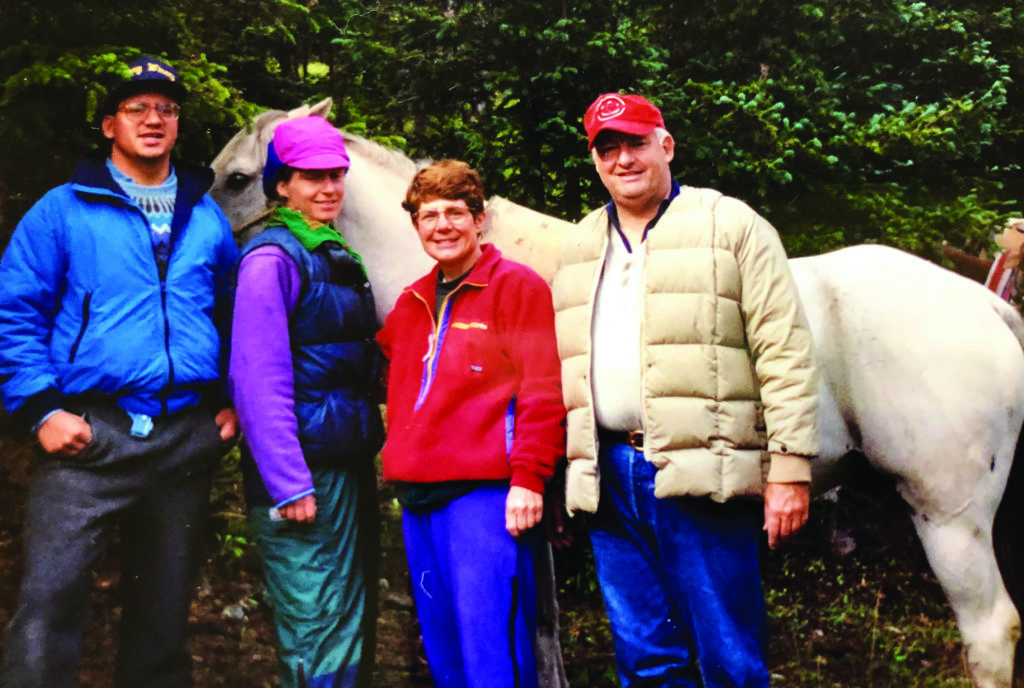
After multiple conversations, Dave, Sr. decided to follow Stephanie in establishing a fund at GTCF. Dave, Sr. elected to establish a donor advised fund, while Stephanie chose a donor directed pooled fund. “We had considered establishing our own foundation,” noted Stephanie, “but after talking to GTCF, we saw we could do the same type of work without having to do the work of managing the funds.”
But just a few months later, Dave, Sr. had an unexpected health crisis. “Dad had COVID-19 in July of last year and came through it like a champ,” said Stephanie. “Then shortly after that, while I was out in Wyoming for business, I got a call from him saying ‘I just got diagnosed with esophageal cancer.’”
Dave, Sr., Stephanie and her brother Dave, Jr., headed at once to M.D. Anderson Cancer Center in Houston for Dave’s treatment. After a number of weeks undergoing out-of-town treatment, Dave decided to continue his treatment back in Toledo where he could enjoy the end of duck-hunting season and time with his brothers and family.
Sadly, Dave, Sr. lost his battle with cancer in January of this year. “My dad would have been 84 on February 1 this year, and you would never have known it. He was an active sportsman and only four weeks before he passed away, he was duck hunting. My mom, Dana, had traveled to Kenya less than a year before she passed from cancer. That’s one reason why we’ve been avid supporters of the American Cancer Society.”
Now Stephanie and her brother, Dave, are the successor advisors to their parents’ fund. “Our plan is to continue doing what we’ve always been doing. Our entire family has had a history of generosity. I think Mom and Dad would trust us to make sure it was ‘done right’ and honor the family traditions.”
Start A Fund
To inquire about starting a fund at the Foundation, please contact Mike Greer, Vice President, Philanthropic Services & Advancement, at 419-241-5049 or [email protected]
Meet Mark and Gretchen Zyndorf
Mark Zyndorf will tell you that when he married his wife Gretchen after nearly a lifetime of bachelorhood, he found true love with one of the most exceptional women he’d ever known.
“Her stepdaughter would describe her as a cross between Martha Stewart and Mother Teresa,” he said. “And it’s true. She was a very creative person, and loved to entertain. And everything was about others – never about her.”
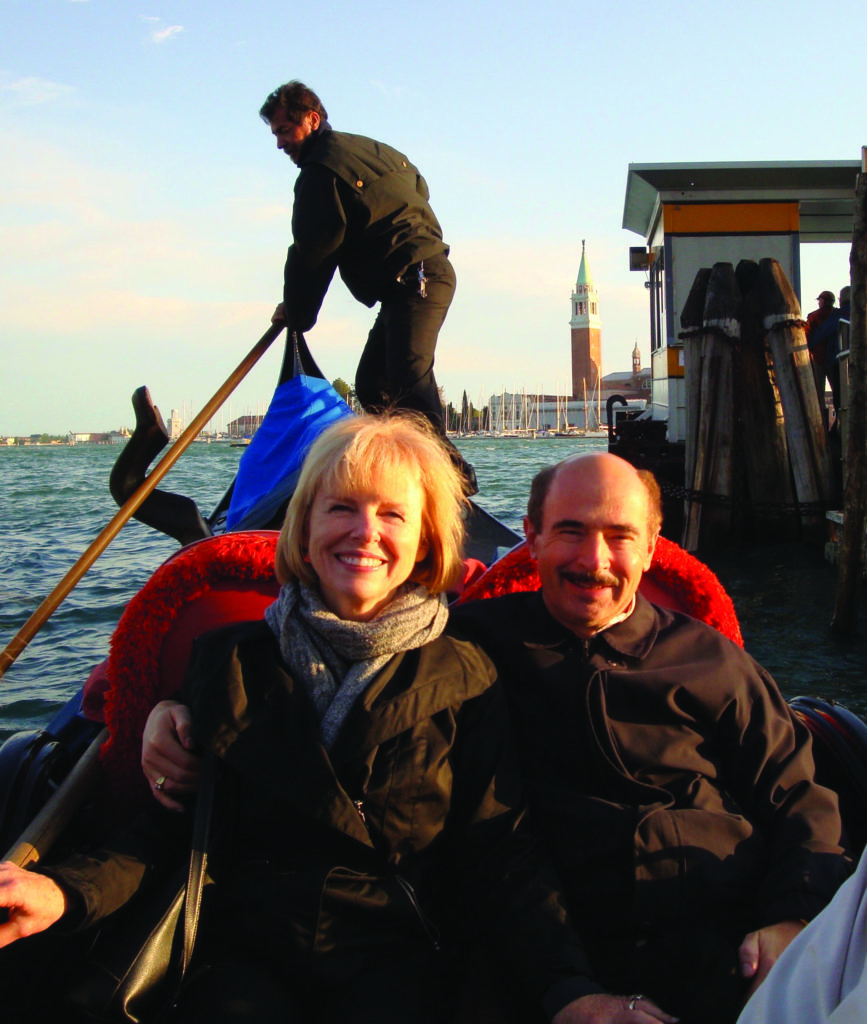
Gretchen’s selfless nature was inspired by a keen awareness of her blessings and a deep sensitivity to others who were less fortunate. She spent a lonely childhood on her family’s farm, and had a difficult but brief marriage to her high-school sweetheart. Gretchen then remarried happily to a successful physician but was widowed after just twelve years. She married again, this time to Mark’s best friend, Sheldon, whom she also lost to lengthy illness.
Sharing a common grief for their lost loved one, Mark and Gretchen soon were seeing each other with some frequency. “Gretchen wondered if perhaps it was too early to consider a new relationship,” said Mark, “so she consulted our rabbi. ‘Life is for the living,’ was his advice – so she took it.” Within two years, the couple wed.
As Mark’s wife, Gretchen continued her lifetime habit of helping others in ways big and small. “She enjoyed doing the behind-the-scenes work,” said Mark. “She cooked a full meal every month for a homeless shelter. She served on the board of the Sight Center – but she also read to the blind. She donated to the Humane Society‚ but she’d also clean cat boxes and cages as a volunteer.”
Gretchen was well-off in her own right before she married Mark, a successful commercial real-estate developer, so she managed her own funds. “She didn’t buy expensive clothes or a lot of stuff for herself,” said Mark. “But she couldn’t figure out where all her money was going. I said ‘Give me your checkbook and I’ll tell you.’ Then I discovered nearly all of her personal expenditures were gifts to charity.”
Photo: Gretchen and Mark Zyndorf enjoyed travelling together. Here,
they are savoring a gondola ride through the canals of Venice.
With that, they decided to establish a donor advised fund for Gretchen at GTCF. And, when they established a number of legacy funds (planned gifts) for Gretchen, they were making provisions for an eventuality in the distant future. But then, an unexpected illness changed everything.
“She didn’t drink, and took excellent care of her health,” said Mark. “But despite all that, she contracted a rare form of liver cancer,” he explained. Thanks to excellent medical treatment, Gretchen and Mark were able to enjoy almost three additional years together before she lost her battle with the disease.
Speaking of her generous spirit, Mark said, “Gretchen wanted to be sure that when she passed, her legacy would include support for the causes she held dear – the arts, animals, and people in need. Caring for the less fortunate was tremendously important to her. If ever there was an angel, she was one.”
Join the Legacy Society
For information about current or deferred giving, or to join our Legacy Society, please contact one of our Philanthropic Services Officers at 419.241.5049.
Contact Us